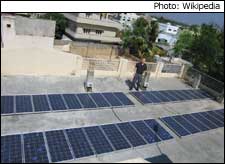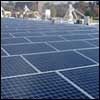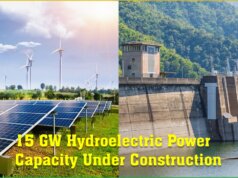Taking into account the current scenario where the declining trend in solar tariff and the increase in retail tariff across residential, commercial and industrial consumer categories is likely to result in appreciable scaling of rooftop solar capacities in the capital, the Delhi Electricity Regulatory Commission has issued a proposal on net metering and low tension connectivity in respect of rooftop solar photovoltaic projects.
Net metering facilitates self-consumption of electricity generated by the rooftop solar project besides enabling feeding of the surplus power into the network of the distribution licensee. The type of ownership structure for installation of net metering-based rooftop solar systems is considered an important parameter when defining the different rooftop solar models. In the international context, rooftop solar projects have two distinct ownership arrangements. They are either self-owned where the rooftop owner owns the PV system or owned by a third party where the developer owns the PV system and enters into a lease/commercial arrangement with the rooftop owner.
In case of Delhi, both ownership arrangements are relevant.
 Under the self-owned arrangement, the rooftop owner, who is also the electricity consumer for the utility, installs the rooftop solar system, either on his own or with the help of a system supplier and installer. The electricity generated by the system is first used to service the consumer’s captive load within the rooftop owner’s premises. The solar power generated in excess of the owner’s electricity consumption is fed into the grid through a net meter. Being bi-directional, the net meter registers both import and export of electricity. The net generation is then credited to the owner’s account and adjusted subsequently against imports from the grid.
Under the self-owned arrangement, the rooftop owner, who is also the electricity consumer for the utility, installs the rooftop solar system, either on his own or with the help of a system supplier and installer. The electricity generated by the system is first used to service the consumer’s captive load within the rooftop owner’s premises. The solar power generated in excess of the owner’s electricity consumption is fed into the grid through a net meter. Being bi-directional, the net meter registers both import and export of electricity. The net generation is then credited to the owner’s account and adjusted subsequently against imports from the grid.
In the second type of ownership arrangement, the developer leases out the solar PV system to the interested rooftop owner. The arrangement is popular for residential homeowners, where turnkey installers lease rooftop systems to individual owners who, in turn, pay a monthly lease rental. The owner of the house provides the rooftop and commissions a turnkey installer to design and install the system. Alternatively, the installers may also offer an integrated service of leasing, commissioning and maintaining the systems to owners and guaranteeing standards of performance. The electricity generated from such a system is used to meet the rooftop owner’s internal electricity needs while the excess generation fed into the grid on net metering basis.
There are certain benefits for both the rooftop owner and the developer when the latter type of ownership arrangement is opted for. To begin with, the rooftop owner is able to avoid large upfront investment for the solar equipment. He also avoids assuming the technology or performance risk of solar systems. Net metering allows the rooftop owner to save on power consumed from the grid to the extent of solar generation. A part of savings in power consumption is shared with the developer by way of lease rental. The developer generates revenue for himself by way of lease rental from the rooftop owner under a contract. Being owner of the equipment, he qualifies for claiming depreciation on the capital cost of the PV systems with associated direct tax benefits.
It needs to be kept in mind though that a third party owned system would result in an open access transaction with implications of wheeling charges and surcharge relating to cross subsidy.
As per the proposal floated by DERC, for protection of the grid, the net metering facility would be extended to the solar power system installed in establishments/consumers connected to the grid by distribution licensee as long as the cumulative capacity to be allowed for a particular distribution transformer does not exceed 15 percent of its capacity. Two meters would have to be installed by the solar power generator, one for measuring solar generation and the other for import/export measurement.
The DERC proposal cumulatively caps the electricity generated from a solar rooftop system at 90 per cent of the electricity consumption by the eligible consumer at the end of settlement period, the relevant financial year. The carry forward of excess energy generation is allowed from one billing cycle to the next till the end of the same financial year. Any excess generation above 90 per cent at the end of the financial year would be considered as free energy and not adjusted against the consumer’s consumption.
The maximum capacity permitted for rooftop solar is1 MW for a single net metering point. The DERC has sought suggestions and/or objections with regard to its proposal by December 16, 2013.











